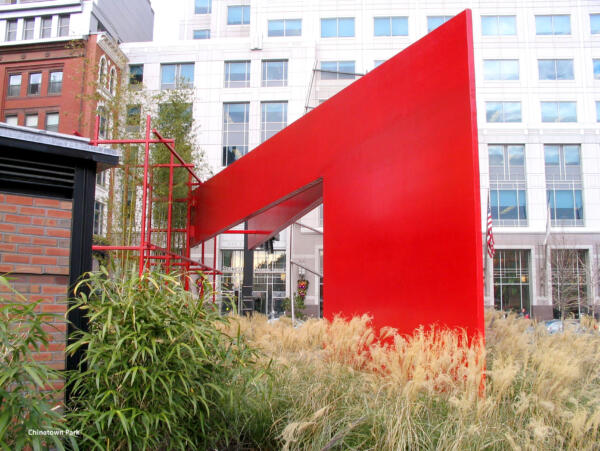Wash Primers for Preparing HDG for Painting
How do I Utilize Wash Primers for Preparing HDG Surfaces for Painting?
In order to provide a good adhesion profile for the paint in a Duplex System, the hot-dip galvanized surface must be cleaned and slightly roughened to provide an anchor profile. Although brush-off blast cleaning is most commonly used for preparing and profiling hot-dip galvanized surfaces (HDG) for painting, ASTM D6386, Practice for Preparation of Zinc (Hot-Dip Galvanized) Coated Iron and Steel Product and Hardware Surfaces for Painting, lists alternative methods also. A wash primer is just one of many methods to prepare the galvanized surface for painting.
A wash primer, or self-etching primer, uses a metal conditioner to neutralize surface oxides and hydroxides, as well as etch the galvanized surface to provide a surface suitable for painting. Traditionally, wash primers come as a two-pack product and are mixed just prior to use. Part A contains an alcohol solution of polyvinyl butyral resin pigmented with zinc chromate, while part B is the activator containing an alcohol solution of phosphoric acid which reacts with the polyvinyl butyral resin, the zinc chromate, and the steel. SSPC-Paint 27, Basic Zinc Chromate-Vinyl Butyral Wash Primer, specifically addresses the application and inspection of these two-component products.
However, if required to meet certain industry and regional restrictions regarding the use of chromates, products which are free of zinc-chromate are available on the market. Additionally, water-based formulas are available to meet low VOC requirements. Currently, there is not a general specification which governs the use of these products, so the manufacturers instructions are to be followed.
Almost all types of paints will adhere well to wash primers, but in general, paints containing alcohol or ketone solvents, and many single-component water-based paints (acrylics, urethanes, polyurethanes, epoxies, etc.) generally show the best adhesion to wash primers. Wash primers are not typically compatible with vinyl, lacquer, or rubber paints. Furthermore, avoid specifying wash primers to prepare hot-dip galvanized surfaces for top coats that require a profile height significantly greater than 0.5-1.0 mils, or are to be applied significantly greater than 3 mils dry film thickness (DFT) in a single application. It is best practice to contact the paint manufacturer to confirm the compatibility between the intended wash primer and top coat.

Wash primers do not work over hot-dip galvanized coatings that have been dipped in a zinc-phosphate post-treatment tank. Additionally, chromate quenching is not advised, as adhesion of the wash primer will be negatively affected. For the chemical reaction to occur over the hot-dip galvanized coating, a clean bare zinc surface is required. If required, a test for detecting chromate coatings can be conducted per ASTM B201, Practice for Testing Chromate Coatings on Zinc and Cadmium Surfaces, and a procedure for remediation is provided within ASTM D6386 Section 5.1.2.1.
Follow the manufacturers recommendations regarding mixing, thinning, pot life, application, thickness, drying times, and compatible top coats. Additionally, SSPC-Paint 27 can be consulted for specific guidance when using zinc chromate-vinyl butyral wash primers. Solvent cleaning according to SSPC-SP1, Solvent Cleaning should be performed to prepare the hot-dip galvanized surface for application of the wash primer. However, power washing or light sanding are occasionally suggested by the manufacturer in addition to solvent cleaning. In general, wash primers are sensitive to excess moisture during application and curing, should be applied as soon as possible after solvent cleaning, and painted over immediately when dry (typically 0.5 4 hours).
Wash primers can be applied by air spray, brush, or roller, but air spray is the preferred method in order to control coating thickness within the target range, typically 0.3 mils 0.5 mils DFT. It is critical to not exceed 0.5 mils DFT (or the listed maximum DFT per the manufacturers project data sheet) to avoid delamination of the wash primer or failure after top coating. Brushing or rolling make it difficult to apply the wash primer uniformly under the maximum recommended thickness, and are recommended for touch-up only.
The AGA has a list of wash primer products which may be suitable to prepare hot-dip galvanized surfaces for painting. For this list or additional information on the use, application and inspection of wash primers for preparing hot-dip galvanized surfaces for painting, contact the AGA Technical Department at [email protected].
© 2025 American Galvanizers Association. The material provided herein has been developed to provide accurate and authoritative information about after-fabrication hot-dip galvanized steel. This material provides general information only and is not intended as a substitute for competent professional examination and verification as to suitability and applicability. The information provided herein is not intended as a representation or warranty on the part of the AGA. Anyone making use of this information assumes all liability arising from such use.

